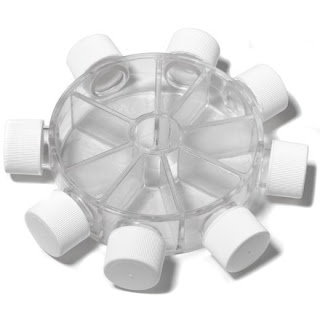It’s summer and everyone is going camping. What do you take to eat? I was stumbling around this question a few weeks ago. Luckily, I found Jenn of “Live Green, Wear Black“. She is a blog writer, an avid gardener and home chef specializing in vegan fare, aspiring to write a backcountry vegan cookbook. Oh that book will fit nicely in my growing cookbook collection! Today, we are sharing a re-post from her amazing blog to help you start planning your next camping menu.
Vegan Camping: Planning & Provisioning
Nearly all camping cookbooks I have read focus on incorporating highly processed foods (ramen, instant pudding, powdered milk, Minute rice, canned beans, instant powdered soups). There are no vegan/whole foods camping cookbooks, much less backpacking cookbooks. It’s like they are going out of the way to find things like powdered eggs and individual packets of butter.
Packaged meals are ridiculously popular – and not all that tasty. I’ve even tried out some Mary Jane’s Farm vegan meals and the meals that worked best were the premixed pancake and brownie mix. Just not worth the extra packaging.
The great thing about cooking vegan is that you’re not really worried about your food going bad and poisoning you. And – why go out of your way to prepare things that you wouldn’t normally eat?
Among my considerations are:
- Ingredients which cook relatively quickly – though I have been known to make up Thai sticky rice with delicious nutty black rice, it uses a lot of camp fuel and rice doesn’t go on most trips. Couscous and quinoa are both a “win.”
- Reducing packaging – why bring individual size packets of anything?
- Reducing use of disposables – cooking in foil packets is easy but why use foil when car camping?
- Meals that have no or small amounts of leftovers.
- Menu plans that have flexibility in types of cooking.
- Menu plans that use up fresh ingredients earlier in the trip.
Car camping usually ends up filling 2 boxes of food, pots, plates & utensils. You can check out my packing list for my week long trip to Death Valley. My favorite item – for any size camping trip – is my Spice Wheel. That thing has gone with me car camping, motorcycle camping and backpacking.
Typical meals are pasta with sauce (my own – if I’m packing in/packing out, my own mason jars are just fine), veggies with curry sauce in small glass jars, tofu scramble & homefried potatoes for breakfast, olives, dolmas (the kind in a tin or jar) and hummus with bread for a lunch.
On the Death Valley trip, I put beets in foil into the fire and used them for sandwiches and made a jar of beet salad with the rest of the fresh mushrooms, red onions, balsamic, olive oil & herbs de provence.
What are your favorite car camping or backpacking/motorcycle camping meals? Do you end up eating PB&J or meals from packets?



Thanks for considering me as a guest poster! I'm inspired to get out a backlog of post drafts and look forward to seeing my other guest spots up here! I put a link up on my blog for visitors to check out Dog Island Farm!
Jenn,
We look forward to more guest spots in the future as well!